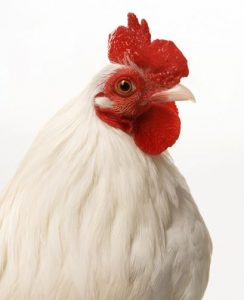I recently introduced a concept called Content Shock which created a meaningful dialogue in the marketing community.
The core premise is that we have been in a marketing environment of increasing consumption of content (in terms of hours per day) enabled by tech advances. But eventually, there is a limit. The latest research shows that Americans spend about 10 hours a day consuming content, up from 7.4 hours per day in 2000 and 4 hours in 1980.
At the same time, the amount of available content is exploding, which will place a strain on marketing resources to keep up and even maintain “mindshare” with our customers. It does not mean content marketing will end (I don’t think that will ever happen) but it will have to change, and I challenged readers to think through alternative strategies when their businesses start to see that cliff.
A meaningful dialogue ensued in the comment section, new blog posts, and even personal phone calls. The overarching theme was, “yes, we are already seeing this.”
But there was also some great dissent. In particular I would like to respond to an excellent post by Shel Holtz, an intellect I have admired for many years. In a treatise titled “Six Reasons there will be No Content Shock,” he looks at this from a consumer perspective and represented a dissenting view held by a few others.
You might be surprised to know that I do not believe our views are mutually exclusive. In fact, I agree with him. To illustrate how these views can co-exist, I would like to tell a parable, which is also a true story.
A Content Shock Parable
Long ago, I lived in a little town called Rockdale, Texas (pop. 5,611). There wasn’t much to the town, in fact it only had one fast-food restaurant, Parsley’s Pullet Parlor, a fried chicken place owned by the colorful local entrepreneur and cowboy Harold Parsley.

So in a defensive maneuver, Harold leased empty lots all around town and put up signs that said “Coming Soon! Another Parsley’s Pullet Parlor!” Of course he had no intention of ever building another location. He was just trying to scare off KFC through his apparent market dominance.
As long as Harold was the only game in town, he thrived, but sure enough, within a decade, fast-food chains started appearing in Rockdale. McDonalds. Wendys. Pizza Hut. And no matter how much his customers loved Harold, they were starved for some new content!
For awhile, he was able to survive on his loyal customer base, but month by month his business eroded because now the available dining budget and appetite of even his best customers — a finite amount — was being eroded by the aggressive competition.
And then his nightmare came true. Kentucky Fried Chicken opened its doors, along with highway billboards, newspaper coupons and advertising that dominated the airwaves. Harold soon had to close his little family business for good.
What does this have to do with content marketing?
First, let’s look at why Shel Holtz is correct because from a CONSUMER perspective, they could not be happier!
Sure, people have a limit to how much fast food they could consume, but more channels meant better quality, diverse offerings, and better value. This is the main point Shel makes in his article and I agree that to the consumers, the “content shock” that Harold was experiencing was invisible. Not only did the shock not occur, there was a benefit to all that new content!
But from a business perspective, this “shock” was a disaster. When Harold had the only “content niche” in town, he thrived. In fact people who were hungry for chicken or needed the convenience of fast food had no other place to turn for many years. But as soon as the niche began to explode with competition, the game was won by the brands with deep pockets who could out-gun and out-last Harold.
If demand in the niche miraculously could grow unabated, (people grew more stomach capacity?) Harold might have been able to hang on. But as in every market, including the market for attention, there is an inviolable ceiling at some point.
Emotional connection works with critical mass
Harold still had the quality product and the deep emotional connection with customers to at least keep some share of the dining budget. But people get tired of chicken. When there are so many content alternatives, they are going to naturally go to other places even if they love you. In this case, Harold neither had the critical mass of customers to survive nor the resources to compete with mega corporations now beating him to a pulp in a defined niche of 5,611 potential customers.
I don’t want to get into a discussion of all the business strategies Harold could have explored to survive (even in those pre-Internet days). Remember, this a parable to explain in simplified terms the difference between the consumer view of Content Shock (benign) and the business view of Content Shock (a tremor).
I’m sure there will be much more dialogue on this topic and I am happy to have it happen because these are precisely the discussions that will help us all grow.


